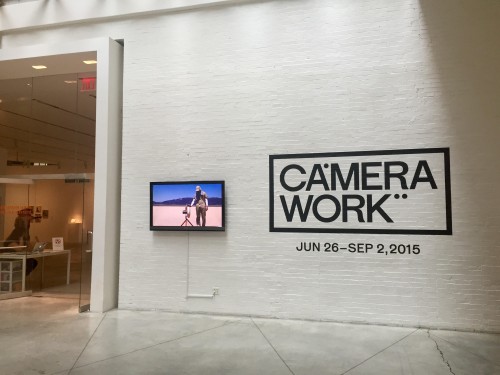Today, September 2nd, marks the last day to see “Camera Work,” an exhibition presented by the MFA Photography Program in the School of Art, Media, and Technology. There will be a closing reception held tonight from 6-8pm in the Arnold and Sheila Aronson Galleries at 66 Fifth Avenue. Curated by Parsons professors Sarah Hasted and Joseph R. Wolin, the show features the work of fifteen alumni of Parsons’ MFA photography program.
“Camera Work” derives its name from the Alfred Stieglitz photography journal, grounding the medium in its history. Still, the show looks towards the future by displaying camera work in its various and changing forms in the modern day, featuring prints, video installations, and multimedia pieces. Keith Telefyan’s Endless, Nameless, for example, is comprised of a group of square photographs arranged in a grid to resemble an Instagram feed. Featuring filtered snapshots of sunsets and trees, the work captures the specific aesthetics associated with Instagram, elevating and legitimating its role in modern photography by placing it in a museum setting. At the same time, the title of the piece critiques the endlessness and ubiquity of photography today, made much more readily accessible and consumable due to social media.
Even works that appear more traditional in method are brought into modern times. Charlie Rubin’s photographs of the relatively mundane and commonplace are made unique through his use of editing and printing techniques. In Untitled (Palms), a photograph of a palm tree against a blue sky is edited to create a holographic effect that moves the piece forward from the typical conventions of landscape photography.Works of photojournalism like Joy McKinney’s Armed Forces tackle current issues in ways that reinvent the customs of photojournalism.The project details her confronting and embracing armed police officers, representing these interactions with close-ups of these officers that show her hand looming in front of the lens. Armed Forces deals with issues of race in the context of today’s social climate while also referring to the importance of photography and film in holding police officers accountable.
The exhibit closes with a magazine rack containing publications that the artists have been featured in. This emphasis on the printed page reveals that while these artists may be pioneering a new era of photography, one that mostly occupies the digital word, they still can never completely untangle themselves from its traditions. By displaying the diverse practices and methods of photography, “Camera Work” functions as a testament to the medium’s ever-adapting, lasting nature.
written by Ana Miljak
Camera Work’s closing reception will be held in the Arnold and Sheila Aronson Galleries, Sheila C. Johnson Design Center on Wednesday, September 2nd, 2015, 6pm-8pm.



























